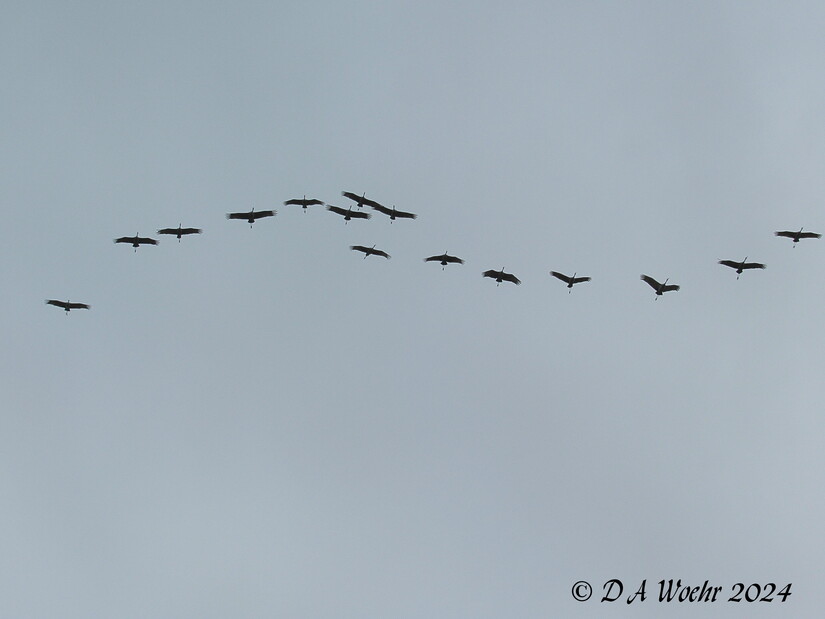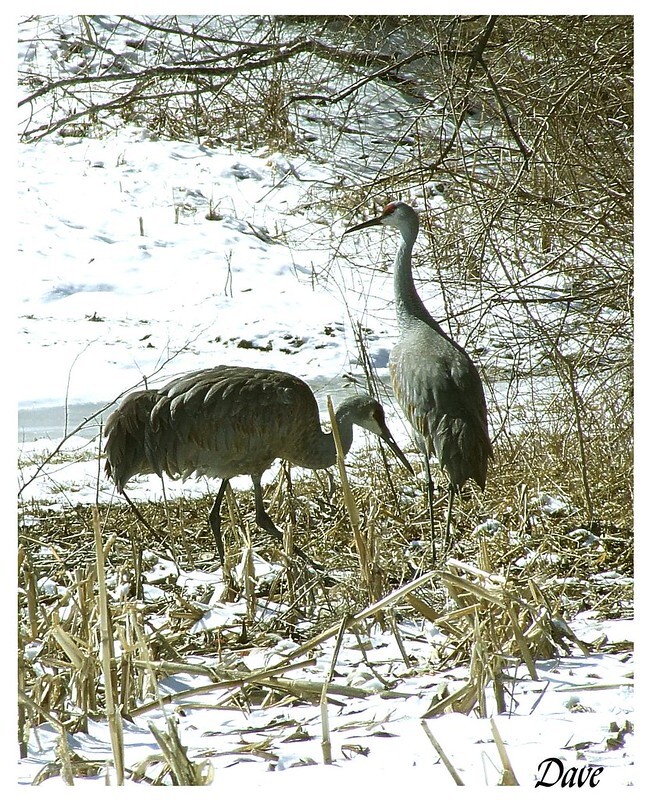Image


LEBANON, OH -- I remember the first Sandhill Crane I ever saw. I was just a grade school boy 8 or 10 years of age. I was hiking with my mother, an avid birdwatcher, along the St. Marys River where it flowed through a park in Ft. Wayne, Indiana. Mother pointed it out to me on the opposite river bank and identified it, then let me view it through her binoculars.
Sandhill Cranes aren’t something we see every day around here especially in January, but they do put in an occasional appearance. Until a week or so ago, I hadn’t seen this species in four years. Then awakening from a nap in my La-Z-Boy chair and looking out the window, I spied a flock of more than a dozen of these majestic birds flying right over my house here in Lebanon with outstretched necks and legs. Many folks might think they are seeing a flock of Canada Geese at first blink, but the crane is a much bigger bird. When on the ground they can stand four feet tall! They display loud croaking vocalizations among themselves in flight – distinctly different from goose honking.

Within a day of my recent sighting I was made aware of several other sightings in the area, some with as many as 70 birds in a single flock. As I said, unusual for January, but this winter has been mild so far, with very little snow. This may provide the cranes with the opportunity to feed on spilled grain in harvested corn and bean fields, an activity for which they are well-known.

Sandhill Cranes usually nest in the northern United States and Canada. In recent years there have been several nesting sites discovered in wetland pockets in northern Ohio. The cranes incubate two eggs in a nest mound in or near the water’s edge. Aside from their almost ostrich size, they are easily identifiable with their bright red forehead patch on the blue-gray plumage of the neck and back. Flanks and breast feathers may have hints of brown. Sandhill Cranes are an entirely different species from the endangered Whooping Crane which is pure white. Do not expect to see a Whooping Crane here in Ohio.